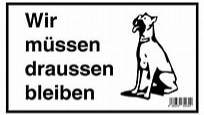Bensen B-8M-EN
Bensen B-8M
The Bensen B-8 is a small, single-seat autogyro developed in the United States in the 1950s. Although the original manufacturer stopped production in 1987, plans for homebuilders are still available as of 2013. Its design was a refinement of the Bensen B-7, and like that aircraft, the B-8 was initially built as an unpowered rotor-kite. It first flew in this form in 1955, and on 6th December a powered version, designated B-8M (M for “motorised”) first flew. The design proved to be extremely popular and long-lasting, with thousands of sets of plans sold over the next thirty years.
The B-8′s design is extremely minimalist, with not much more to the aircraft than a pilot’s seat, a single tailfin, a rotor and (in powered versions) the powerplant. In May 1968 a B-8 and B-8M were studied by the USAF under the Discretionary Descent Vehicle (DDV) program as the X-25B and X-25A respectively. In this scheme, it was proposed to integrate combat aircraft ejection seats with a small autogyro or rotor kite to allow downed pilots more control over their post-ejection landing spot. The X-25A and X-25B were used to evaluate the piloting and training requirements of the autogyros. No full-scale operational tests were ever performed. The U.S. Air Force stopped funding the DDV program with the end of the Vietnam War.
One B-8M, named Spirit of Kitty Hawk (registration N2588B) was used to make a special commemorative flight exactly duplicating the first flight of the Wright brothers’ original Flyer on the sixtieth anniversary of the occasion. This same aircraft was flown by Igor Bensen himself between May 1967 and June 1968 to set twelve world and US speed, distance, and altitude records for autogyros, the largest number of such records to be held by any non-military rotorcraft.
Text from Wikipedia, the free encyclopedia



